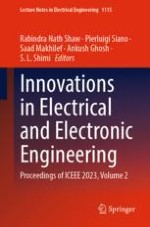This book features selected high-quality papers presented at the 2023 International Conference on Electrical and Electronics Engineering (ICEEE 2023), organized at Chitkara University, Himachal Pradesh in August 2023. The book focuses on current development in the fields of electrical and electronics engineering. The book one covers electrical engineering topics–power and energy including renewable energy, power electronics and applications, control, and automation and instrumentation and book two covers the areas of robotics, artificial intelligence and IoT, electronics devices, circuits and systems, wireless and optical communication, RF and microwaves, VLSI, and signal processing and others. The book brings both single- and multidisciplinary research on these topics to provide the most up-to-date information in one place. The book offers an asset for researchers from both academia and industries involved in advanced studies.
